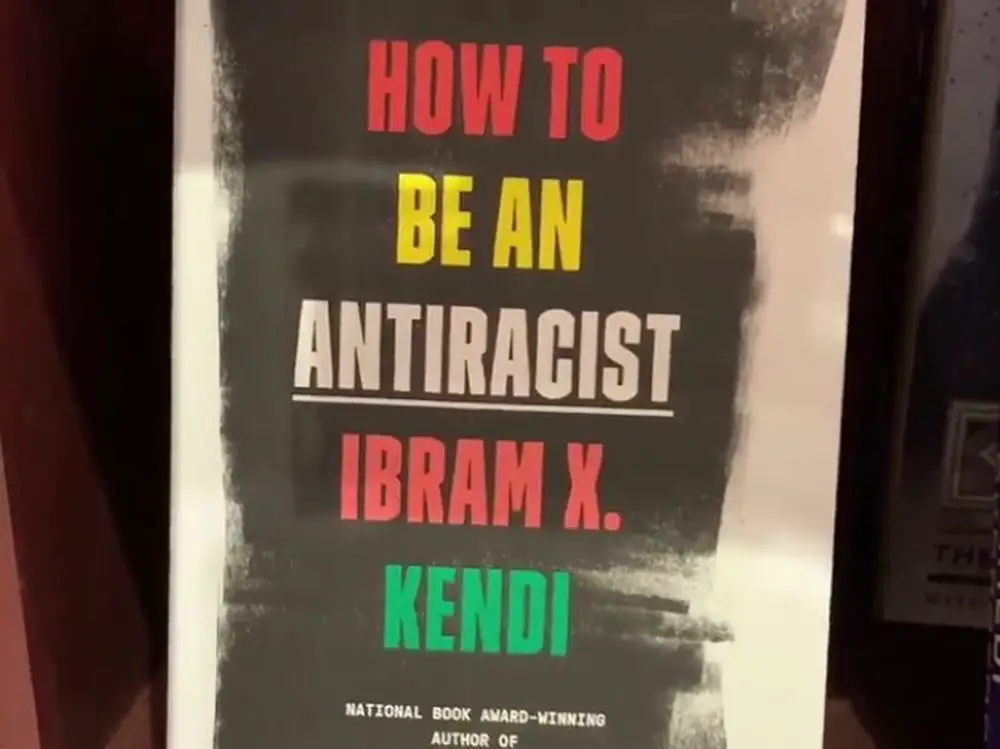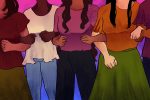What is considered racist? Most people imagine scenarios similar to certain viral videos online: A white person yelling slurs at a group of black people or telling Latinx people to go back where they came from. This issue is at the forefront of modern political discourse, and yet there are many who don’t fully comprehend the depth of the matter. Racism in America is about more than just an imbalance of power, and it will take a collective effort to weed it out of our culture. Ibram X. Kendi’s latest book, “How To Be An Antiracist,” describes the extent of racism in contemporary society and argues that it’s not enough to simply not be racist. Instead, each person must take an active role in fighting hatred and bigotry, and Kendi is here to show them how.
Kendi’s analysis in “How To Be An Antiracist” is performed primarily in telling his own story as a black man in America. It begins with his early years in a predominantly black area in New York, then moves to his nervous teenage years at Stonewall Jackson High, Virginia. From there, he chronicles his college years, first at Florida A&M University then at Temple University. Each chapter of his life uniquely contributes to his argument as he dissects his evolving understanding of racism.
Twenty-One Books to Read After Becoming by @DrIbram – The Atlantic https://t.co/apIPDzQWqg
— Book Girl Magic (@bookgirlmagic) November 14, 2019
The introduction kicks off with a flashback to a high school oratorical contest that Kendi won. His speech heavily included racist stereotypes about black people that he had become accustomed to, which he is deeply ashamed of in retrospect. He recalls shaming his fellow African Americans for not living up to the standard set by Martin Luther King Jr., claiming that they tended toward indifference to school, criminality and multiple pregnancies out of wedlock.
It’s here in the introduction, right from the get-go, that Kendi presents the notion that black people can internalize racism too. Even though the distribution of power in America is still vastly imbalanced, African Americans as a whole have made significant strides in attaining positions of power within our institutions.
He explains that oftentimes black folks will simply reject anything that is “white” and act in contradiction to white people in order to feel as if they’ve gained some power on the individual level. As proof of this, he tells stories from his college years in which he intentionally dated darker-skinned women and avoided lighter-skinned women out of spite. He says it was then that he realized he too was racist.
Kendi then switches from an anecdotal approach to a scholarly one, introducing specific terms and their meanings to describe just how ingrained racism is in society. There’s biological racism, which is the belief that each race is biologically different, and it is this that results in a fabricated hierarchy. There’s also ethnic racism, in which people subscribe to the idea that different ethnicities make people vastly different.
More pertinent to his life and that of other African Americans is bodily racism, which has led to the perception that black people are more physical and violent, and therefore threatening. This notion is part of the reason young black men are more susceptible to police brutality. Cultural racism also labels minority culture, particularly hip-hop culture, as deviant and inferior in the eyes of the dominant culture. Kendi even touches on the negative stereotypes he spoke of in high school and describes how those were a product of behavioral racism. This racism led him to believe his poor academic performance was a result of his race.
The author’s voice in “How To Be An Antiracist” makes the book a page-turner. Handling a particularly touchy subject, Kendi’s down-to-earth voice levels with the reader as he floats between ideas and anecdotes, stringing them together. His honesty goes beyond just reflection — it’s almost self-criticism. It’s as if he is repenting his own sins within the pages.
To an extent, he is correct to do this since massive change starts with individuals. This is explained in depth by the likes of Nathaniel Hawthorne, Mahatma Gandhi, and of course, Martin Luther King Jr. According to The Washington Post, this warrants his later conclusion that “the opposite of ‘racist’ is not ‘not racist,’ but ‘antiracist,’” a term he uses to refer to those who speak or act in ways that advance racial equality in society.
In the spirit of individualism, Kendi is also sure to emphasize the most important aspect of “antiracism,” which is recognizing racism at the singular level. He explains that, while there is institutional racism, it’s individual people who create toxic policies that uphold society-wide racism.
This isn’t the strongest argument in the book, as there are many in government at the national and local level who hold prejudices that contribute to harmful policies. However, Kendi is correct that singling out individuals, and consequently protesting and voting them out, sustains progress toward eliminating chauvinist presences in the world of public policy. While this fails to acknowledge the extreme difficulty of such a task, it does promote beneficial political participation by black communities.
Even with political participation, the negative stereotype of black people as nonvoters still exists. It simply isn’t true. According to Brookings, “Black voter turnout was within 1 percentage point of whites in 2008 (65.2% compared to 66.1%) and was actually higher than whites in 2012 (66.6% compared to 64.1%).” However, “In 2016, voter turnout for Blacks dipped to 59.6%. While that number was lower than whites (65.3%), it was still higher than Asians (49.3%) and Hispanics (47.6%).”
This is indicative of the truth, that African Americans do vote. It is when they feel that their needs aren’t met by any particular candidate that they abstain from participating. This is due in part to the history of disenfranchisement of black people in America, which still happens in some areas. That’s right, we’re looking at you, Georgia.
“How To Be An Antiracist” briefly touches on voting history but also uses it to recall this country’s history of slavery, identifying the inherent racism within capitalism due to the slave trade. After all, capitalism rests on the myth of people’s ability to pull themselves up by their bootstraps, but the historical reality is that white people stepped up the ladder using the backs of slaves.
This is what gives “How To Be An Antiracist” its zing: the author’s willingness to be controversial. He acknowledges that some of his ideas might “trigger” some people but he’s not afraid to speak his mind. He also effectively balances controversy with teaching real concepts in an understandable manner by using excerpts from his own life. His candor and conversational tone help the reader bear with him as he navigates a tricky subject. Overall, Kendi’s work is a valuable addition to your nightstand.
















